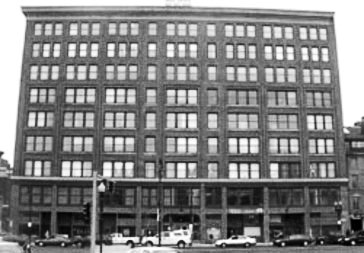 Boston’s North End has a unique flavor that is distinctly Italian. “Little Italy” features narrow cobblestone street, small boutiques, fabulous restaurants, and delicious pastry shoppes. On the weekends, tourists and locals alike flood the streets. The North End is a neighborhood with a history as rich as the filling of a cannoli.
Boston’s North End has a unique flavor that is distinctly Italian. “Little Italy” features narrow cobblestone street, small boutiques, fabulous restaurants, and delicious pastry shoppes. On the weekends, tourists and locals alike flood the streets. The North End is a neighborhood with a history as rich as the filling of a cannoli.
1600s
• Boston’s oldest neighborhood was established in the mid-1600’s. By 1646, the area had a population large enough to call for it’s own church, the North Meeting House.
• The original residents of the North End were Puritans, as well as slaves from New Guinea.
• During the 17th century, the North End was home to Boston’s first food markets, as well as mills that converted food to storable grains and wood for construction of homes and ships.
1700s
• Old North Church is constructed in 1723 – the oldest church building in Boston proper.
• Merchants & Robust Economy – The 18th century brought bustling trade for merchants in ship building. A bustling economy fueled by shipbuilding and trade. Imports, including sugar, fruits, coffee, tea, and wool. in turn these ships brought merchants importation of worldly goods such as sugar, fruits, coffee, tea, wool, etc. essential items for everyday existence. The artisans of the time were expanding their skills in gold and silver-smithing, copper production, and iron and steel bell casting.
• These merchants settled in the North End in the late 1700s, building mansions and developing the area into a desirable residential neighborhood.
1800s
• Commercial Success Begets Seaport – Commercial development thrived during the first half of the 19th century. These growing businesses created a need for expansion of the waterfront. Massive landfill projects were the answer, creating Quincy Market and the wharves we know today. This led to an influx in trade and shipping, making Boston a powerful and important seaport.
However, commercial success also brought deterioration in residential living conditions.
• Immigration & Changing Ethnic Make Up – The North End soon became the gateway for major immigration in the 1800’s. The Irish were the first immigrant residents, followed by the Germans, Russians, and Polish Jews followed by a few Portuguese, and finally a wave of Italian immigration in the 1880’s. Tensions between Irish Catholics and the Protestant community erupted during the mid-1800’s, causing many Protestants to leave the area. As living conditions deteriorated, wealthy North End families moved to other parts of Boston, including Beacon Hill.
• Little Italy is born – During the 1860s, the first Italian immigrants arrive from Genoa. A large influx of Italian Immigration followed in the 1880’s, shifting the immigrant demographic from Irish to largely Italian. After the initial Genoese immigrants of the 1860s, the Campanians, Sicilians, the Avellinese, the Neopolitans, and the Abruzzesians followed.
The North Bennet Street Industrial School was founded in 1881 by Pauline Agassiz Shaw to teach Italian and Jewish immigrants skills needed to obtain employment, bolstering the North End’s economy.
In 1899, Saint Leonard’s Church at the corner of Hanover and Prince Streets was completed, becoming the first Italian church in New England and the second oldest in America.
1900s
Molasses Catastrophe – January 15, 1919, a 50-foot tank filled with 2.3 million gallons of molasses exploded on the North End industrial waterfront, causing widespread destruction. An 8-to-15 foot wave of molasses swept through the streets at 35 MPH. Twenty-one people perished and another 150 were injured as a result. The following investigation and legal hearings – involving 125 lawsuits – were the longest up until then in the history of the Massachusetts court system.
